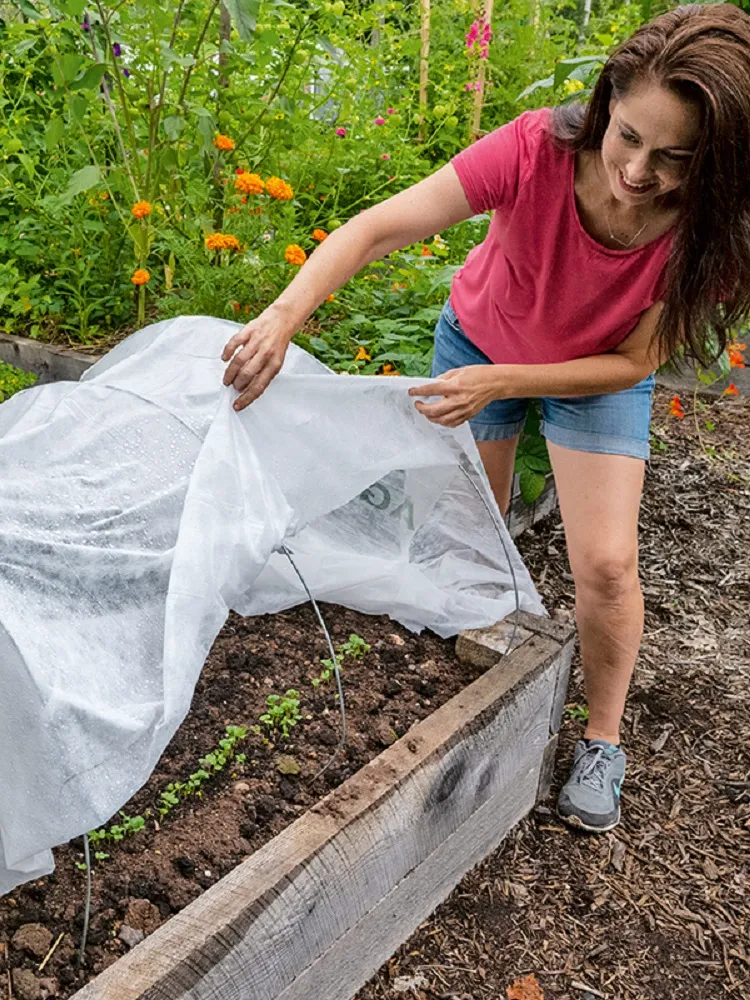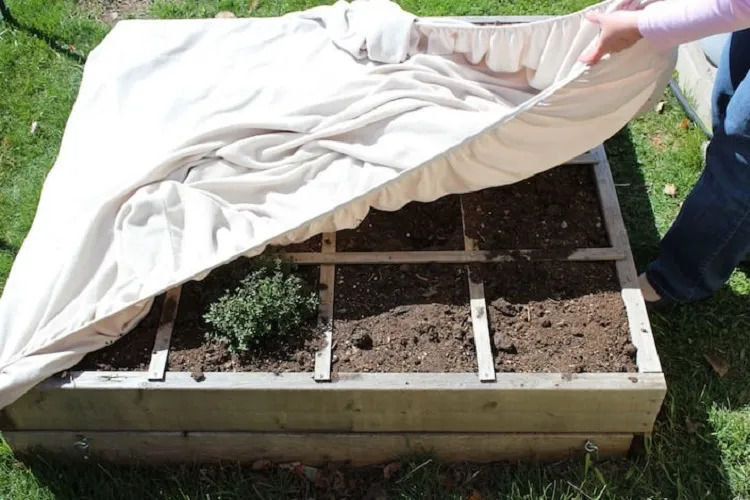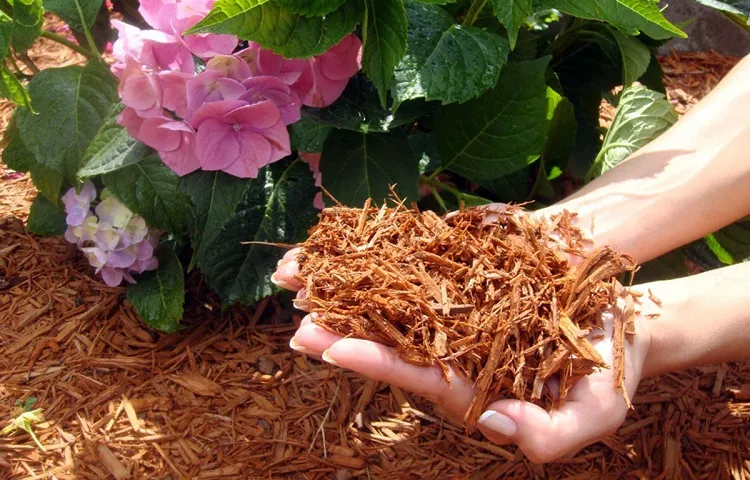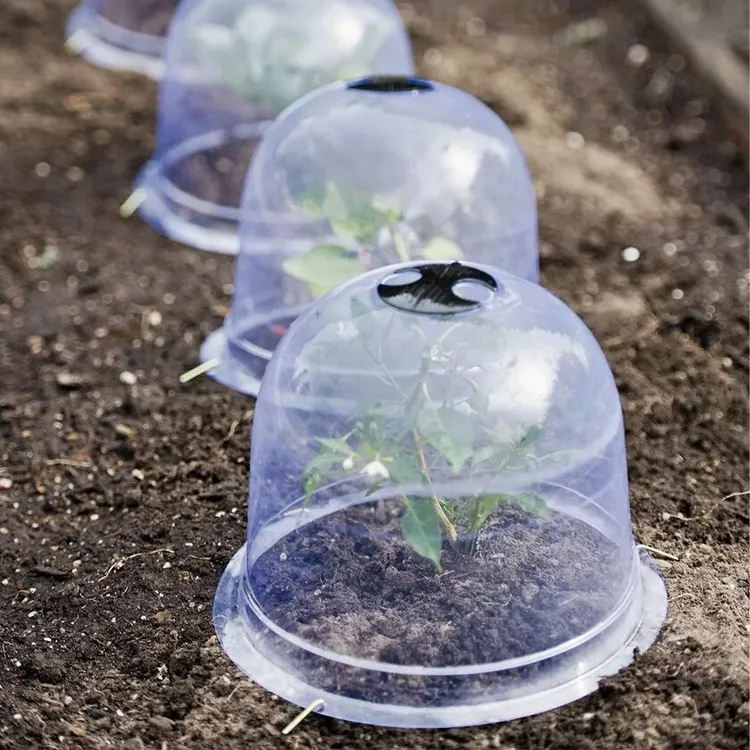When late fall’s chill threatens your beloved garden, it’s essential to know how to protect your plants from frost, which can cause them to wither. However, with the right precautions, you can safeguard your garden’s beauty and let your green companions thrive throughout the cold months. Do you know exactly the day you should protect the green area from the coming low temperatures? How to cover plants for frost?
When to Cover Plants for Frost
Frost occurs when temperatures drop below freezing, 32°F (0°C). However, not all plants are equally susceptible to damage in this situation, and on the other hand, their sensibility to freezing weather depends on the specific features of the local climate. In general, most plants can tolerate a light frost, with temperatures as low as 32-35°F (0-2°C), for short periods. Yet, if the mercury falls below these thresholds or if the frost persists for an extended period, your plants may suffer.
Read also: How to protect plants from frost? Discover 4 tips and tricks for guaranteed results!
What Can I Use as a Frost Blanket?
When it comes to the decision on how to cover plants for frost, a blanket is a suitable and versatile solution. It works by trapping heat and preventing it from escaping, creating a microclimate that keeps your plants warmer than the surrounding air. There are some classic materials you can use as a frost blanket:
- Old blankets or sheets: Old blankets, bedsheets, or drop cloths can serve as makeshift frost blankets if you do not have other alternatives. Be sure they are large enough to cover your plants completely. Just remember to remove them during the day to allow sunlight and airflow.
- Cloth or burlap over plants: Lightweight cloth or burlap can provide protection from frost. Both materials allow some air circulation while still offering insulation. You should secure them over your plants with stakes or rocks.
- Specialized frost blankets: Garden centers offer specialized frost blankets made from breathable materials designed for plant protection. These blankets often have features like drawstrings or built-in hoops for easy installation.
- How to cover plants for frost with mulch: A layer of mulch around the base of your plants can help insulate the soil and protect the roots from freezing. While it won’t protect the entire plant, it’s a beneficial addition to other frost protection methods.
- Row covers protection: Row covers are specifically designed for plant protection. They come in various thicknesses and can be draped directly over your plants or supported by hoops to form a tunnel-like structure. Row covers allow light and moisture to penetrate while providing insulation from cold weather.
- Plastic sheeting coverage: Clear plastic sheeting can also be used as a frost barrier, but it should be supported to avoid direct contact with the plants. This structure can trap moisture, therefore it may not be suitable for all plants, so use it with caution.
Determine the Day to Cover the Plants
To determine exactly the day when to cover your plants for frost, consider being informed about the following factors:
Exploring local climate
Understanding your local climate and its typical frost dates is fundamental. Find out your area’s average last frost date in the spring and first frost date in the fall. These days will serve as a guide for when you should start and stop covering your plants.
Informed about forecasts
Stay updated with weather forecasts. If there is a frost warning, be prepared to take action. It’s better to be proactive and protect your plants in advance than to react after the frost has struck your garden.
Monitoring microclimates
Your garden might have microclimate areas with slightly different temperature ranges. Monitor these different places and be aware of which of them may experience frost earlier or later than others.
Knowing plant susceptibility
Individual plant species have varying degrees of frost tolerance. Tropical and tender species among them are more susceptible to damage in cold weather, while hardy varieties can endure lower temperatures. Ensure that you know your plants’ frost resistance levels and cover the more delicate ones on time.
Selecting the time to cover
Frost is more likely to occur during the early morning hours when temperatures are at their lowest. Be prepared to cover your plants the evening before a frost is expected.
Read also: Fall Gardening: 10 Important Tasks to Complete Before the First Frost
By considering your local climate, plant sensitivity, and the severity of the coming frost, you can make informed decisions to safeguard your beloved greenery and enjoy a thriving garden year-round. Whatever protection decision you make, your green companions will repay you for the extra care during the cold months.








